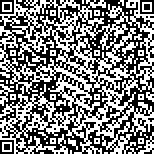施爱群,李永祥,胡兴越,王福生,赵瀛,晏正梅,王大明.偏瘫后肩痛患者肌肉骨骼超声及理学检查结果相关性分析[J].中华物理医学与康复杂志,2017,39(1):17-20
扫码阅读全文

|
| 偏瘫后肩痛患者肌肉骨骼超声及理学检查结果相关性分析 |
|
| |
| DOI: |
| 中文关键词: 偏瘫后肩痛 肌肉骨骼超声 Brunnstrom分期 被动关节活动度 肌张力 |
| 英文关键词: Hemiplegia Shoulder pain Ultrasound Brunnstrom stages Range of motion Muscle tension |
| 基金项目:浙江金华市科技计划项目(2014-3-082) |
|
| 摘要点击次数: 3847 |
| 全文下载次数: 5519 |
| 中文摘要: |
| 目的观察偏瘫后肩痛(HSP)患者不同时期理学检查结果及肌肉骨骼超声影像学特点,为临床治疗提供参考依据。 方法共纳入脑卒中(均为首发)后HSP患者43例,于恢复早期(卒中后3个月内)、恢复晚期(卒中后6个月)对患侧肩部进行理学检查,包括疼痛视觉模拟评分(VAS)、改良Ashworth痉挛评级、被动关节活动度(ROM)检测及Brunnstrom分期评定等,同时于上述时间点采用超声扫查患侧肩关节,超声扫描区域包括肱二头肌长头肌腱、肩胛下肌腱、冈上肌腱、冈下肌腱、肩锁关节、肩峰下三角肌下滑囊等部位。 结果脑卒中恢复早期HSP患者疼痛VAS评分与Brunnstrom分期(r=-0.39,P=0.01)、肩关节被动外展(r=-0.56, P<0.01)、被动外旋(r=-0.36, P=0.02)、被动前屈(r=-0.37,P=0.02)均具有负相关性,与肱二头肌长头肌腱病变(r=0.32,P=0.04)、肩胛下肌腱病变(r=0.31,P=0.04)、冈上肌腱病变(r=0.53,P<0.01)均具有正相关性;脑卒中恢复晚期HSP患者疼痛VAS评分与肩部Brunnstrom分期(r=-0.45,P<0.01)、被动外展(r=-0.60,P<0.01)、被动外旋(r=-0.41,P<0.01)、被动前屈(r=-0.52,P<0.01)均具有负相关性;与肌肉痉挛程度(r=0.34,P=0.03)、肱二头肌长头肌腱病变(r=0.45,P<0.01)、肩胛下肌腱病变(r=0.33,P=0.03)、冈上肌腱病变(r=0.56,P<0.01)均具有正相关性。脑卒中恢复晚期HSP病情较恢复早期严重,恢复晚期肱二头肌长头肌腱病变、肩胛下肌腱病变发生率较恢复早期更高(P<0.05),恢复早期、晚期冈上肌腱病变发生率均较高(分别为41.86%,46.51%),其间差异无统计学意义(P>0.05)。 结论脑卒中恢复早期、晚期HSP患者疼痛病情均与Brunnstrom分期、肩关节ROM具有负相关性,与肌肉骨骼超声异常结果具有正相关性;脑卒中恢复晚期HSP患者疼痛病情与肌张力具有正相关性;HSP患者肱二头肌长头肌腱及肩袖组织容易发生损伤,且以恢复晚期更容易发病。 |
| 英文摘要: |
| Objective To determine the utility of musculoskeletal ultrasound imaging to support physical findings in different stages of recovery and in recommending treatment regimens. MethodsForty-three hemiplegic stroke survivors with shoulder pain were enrolled. Physical examinations were performed 3 and 6 months after the stroke using a visual analogue scale (VAS), a modified Ashworth scale, measurements of passive range of motion and Brunnstrom staging. This was coupled with sonography of the long head of the biceps, the subscapularis tendon, the supraspinatus tendon, the infraspinatus tendon, the acromioclavicular joint and the subacromial-subdeltoid bursa. ResultsThree months after the stroke the average VAS score correlated negatively with the average Brunnstrom stage of the shoulders (r=-0.39, P≤0.01), with the range of passive abduction (r=-0.56, P≤0.01), the range of passive external rotation (r=-0.36, P≤0.02), and the range of passive flexion (r=-0.37, P≤0.02). It was positively correlated with abnormal sonographic findings of the long head tendon of the biceps (r=0.32, P≤0.04), the subscapularis tendons (r=0.31, P≤0.04) and the supraspinatus tendons (r=0.53, P≤0.01). However, 3 months later the VAS results were negatively correlated with Brunnstrom stage (r=-0.45, P≤0.01), range of passive shoulder abduction (r=-0.60, P≤0.01), range of passive external rotation (r=-0.41, P≤0.01), and passive range of flexion (r=-0.52, P≤0.01), but positively correlated with spasticity (r=0.34, P≤0.03), biceps tendinopathy (r=0.45, P≤0.01), subscapularis tendinopathy (r=0.33, P≤0.03) and supraspinatus tendinopathy (r=0.56, P≤0.01). Rotator cuff injury was significantly more severe 6 months after stroke than at 3 months. The incidence of pain in the hemiplegic shoulder and abnormal sonographic findings of the biceps tendon and subscapularis tendon were significantly higher at 6 months than at 3 months after the stroke. Supraspinatus tendon problems were notable both at 3 and 6 months. ConclusionsPain in a hemiplegic shoulder is positively correlated with abnormal sonographic findings but negatively correlated with Brunnstrom stages and passive range of motion 3 and 6 months after stroke. Six months after stroke, pain is positively correlated with muscle tone. The tendon at the long head of the biceps and the rotator cuff are vulnerable to injury, especially at 6 months after stroke. |
|
查看全文
查看/发表评论 下载PDF阅读器 |
| 关闭 |
|
|
|